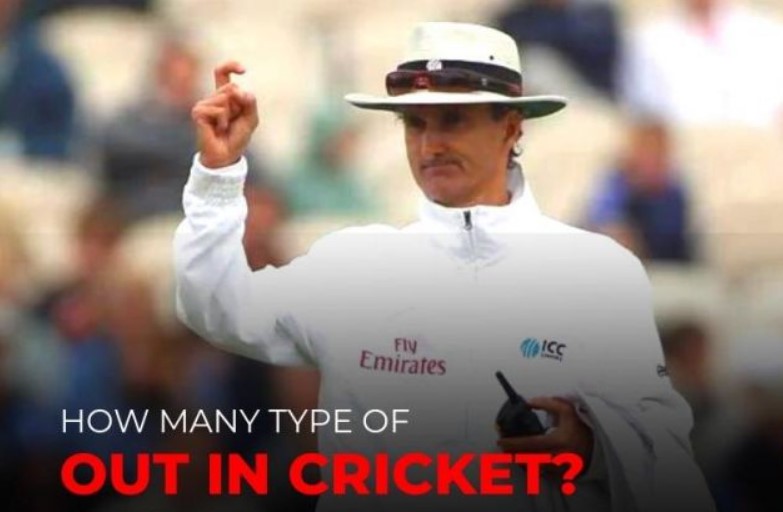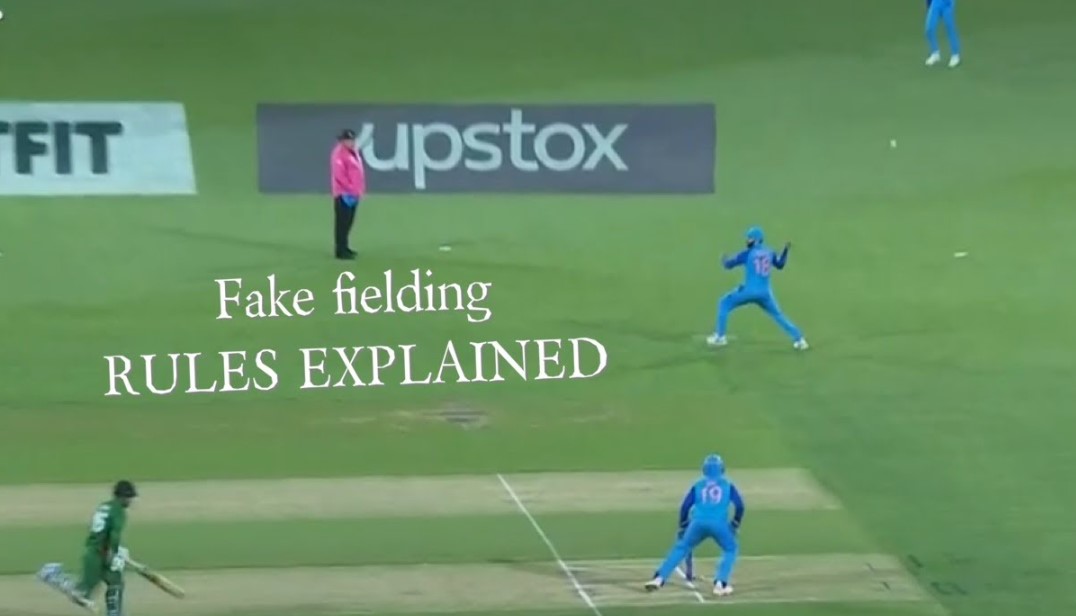How many types of out in cricket?
Cricket is considered to be a game for English gentlemen. The sport may seem too simple, but this is only a first impression. The game has centuries-old traditions, so it has a lot of subtleties. Cricket is considered an iconic English game and part of the historical culture of Britain.
Those who are beginning to familiarise themselves with cricket should learn its rules and all the nuances that are provided in the game. It is also important to learn how many types of out in cricket. An out in cricket means releasing a player with the bat or stopping him from batting. A release is also called an out, which is an important part of cricket.

If you ask the question, how many types of outs are there in cricket, any expert of the discipline will answer that there are 10 outs. Every person who is seriously interested in this game should know about all the options in more detail.
In cricket how many types of out?
As mentioned earlier, outs play an important role in cricket of any format. They are also crucial to the overall result. The fielding team should demand outs to get closer to victory and the batting side should avoid outs.
Types of out in cricket - brief description
| Type of out | Description | |
|---|---|---|
| Caught | The moment the fielder catches the ball after the batsman hits it | |
| Bowled | When the ball hits behind the batsman’s stumps | |
| Leg Before Wicket | If the referee thinks the ball would have hit the wicket if not for the batsman, and the ball hits any part of the batsman without touching it first, | |
| Stumped | As soon as the striker steps in front of the crease to play the ball, the wicketkeeper puts down the wicket with the ball. The striker must leave no part of his body or the bat outside the popping crease | |
| Run-out | When the batsman is outside the popping line and the stumps next to him are down, the ball is still in play. | |
| Obstructing the field | When the batsman speaks or acts in a way that blocks or distracts the defensive side | |
| Hit Wicket | While hitting a ball or taking a run, the batsman moves his own stumps out of the way with his body or bat. | |
| Timed Out | When a batsman comes in and takes more than three minutes to get ready for the next ball | |
| Hit the ball twice | When a batsman strikes the ball twice, once legally and once on purpose | |
| Retired out | When the batsman leaves the pitch without the umpire’s permission for a reason other than being sick or hurt |
Caught
One of the most typical ways out is this one. It’s also the simplest to grasp. The batter is out if the ball is caught by the fielder before it reaches the ground.
Certain intricacies necessitate careful attention. The ball cannot hit the ground before or after it is caught for it to be considered a fair catch. The ball cannot have touched the boundary marks and the fielder must have complete control over it before releasing it.When all conditions have been met, the catch is legal and the player may be released.
Find out how many types of batsman out in cricket if you really want to have a feel for the game. A deeper understanding of the discipline’s essence and norms requires familiarity with its various subtleties and rules.
Punched out
If the ball hits the wicket while the batter is at the crease, the batter is considered to have bowled. If the wicket is knocked over, it counts as a delivery if even one of its parts hits the floor. The ball could make contact with the bat or the wicket or even the player themselves before finally coming to rest on the stumps.
An out in this case is obvious and does not require an umpire’s decision. This release option is common regardless of the form of the game. Statistics inform us that more than 20 per cent of batting players have gone into touch in this manner.
Considering the question, how many types of out in cricket game, it will be interesting to know that in international cricket the out has happened only twice. Coincidentally, it was in that very innings in a Test match.
Leg before wicket (LBW)
The rule was implemented to discourage deliberate attempts to obstruct the wicket. Players have been seen using their legs and other body parts to block the wicket. If the ball strikes the batsman anywhere on his body and then the stumps, he is out. This accounts for the release of more than 14% of players.

Many people wonder how many types of out in cricket, but not everyone knows that runs made by batsmen before the offence should be counted along with any other runs intended to be penalised by either side.
Run-out
A player with the bat is bowled out if a member of the fielding team puts down a wicket while that player is out of the field. To be in the line of their pitch, the batter must have some part of the bat or their body behind the pop-up crease before the wicket is broken.
The point at which the wicket drops is the moment the prop slides off the stumps and falls to the ground. In most cases, run-out releases occur at the moment when the batting players are trying to run away. Run-outs often keep the cricket team and spectators in suspense and the referee makes the decision in most cases.
Run outs in Test cricket are not very common. About 3, 5 % of wickets fall in this way. These numbers may increase in a game with limited overs, but the way to get out is still rare.
Looking at the topic of how many types of out in cricket match, it is important to note that a batter can be bowled from a wide delivery if the wicket keeper takes the ball behind the wicket.
Dead end
If the ball goes through the stumps and the keeper puts the wicket away, the batter is out if no part of the bat or his body is behind the pop-up crease. If the player with the bat starts to run, an out is defined as a run, but if he has just left the crease to play the ball, the batter is deemed to have scored.
Regarding accidental releases, statistics show that only about 2% of batter’s batters in Test mode are eliminated by this method. This number can be increased in limited formats.
Hit the wicket
Release for a struck wicket is governed by Cricket Rule 36. A player with the bat is considered to have gone off the wicket if he breaks it with the bat or any part of his body while taking a strike. The dismissal may also be affected if part of the equipment is dislodged and breaks the wicket as a result of that pitch.
How many types of out in international cricket is already clear, but it is also important to understand some of the subtleties that can happen on the field during a game. For example, if the ball touches the body of the striker and the bat at the same time, the ball is considered to have touched the bat first.
Obstruction on the field
If a batter obstructs the field or distracts the playing side, he is given an out. There is only one player who obstructed play during a Test match. England’s Len Hutton in a game against North America (1951). Hutton kicked the ball away from his stumps to prevent the opposing goalkeeper from taking the ball. In one-day cricket, 8 players with the bat got an out due to obstructing the pitch.

Double strike
This dismissal is an exceptionally rare occurrence. If a player with bat deliberately hits the ball a second time after first hitting the bat or part of his clothing, he may be dismissed from the game.
This rule has an exception, as batters may use the bat or any part of their body other than their hands to prevent the ball from hitting the stumps. If this is the case, the second strike is considered valid. However, if the hit is deliberately made for other reasons, then the umpire will uphold the appeal against the double strike.
How many types of out in cricket is a very important topic. At the same time, you should be interested in curious facts that not everyone knows about. For example, any runs made before the catch is completed are not awarded to the batter.
Time’s up
After a kicker has been dismissed for any reason, the next kicker must enter the field and take their place within three minutes. If they deliberately fail to adhere to this restriction, the performing side may appeal. The referee, however, must leave the dismissal as a “time out”.
“Time out” is rare, and in Test cricket there have never been any such instances. In the long history of first-class cricket only 6 blows have been given out in this way.
Retirement
During a game, a batting player may retire from the field for a valid reason - injury or other type of incapacity. This is only allowed after the permission of the referee. If the reason is obvious - he will allow it.
If a player leaves the field without giving a reason or without permission - he can be dismissed as a dropout. It is quite rare for a player with a bat to leave the field. This usually happens if the player wants to give time in the crease to his colleagues. This has never happened in Test cricket and it is unlikely that a Test batsman will retire.
Such a retirement can be seen except in early matches, when a batter ends his career after scoring a good score so that players from his team can get wicket time.
How many types of out are there in cricket — conclusion
How many types of out are there in cricket — is already clear. Now it’s time to mention a few important points. Dismissals are also methods of getting out. Methods by which you can claim the wickets of a batter by getting him out or finishing his innings. A batting side starts their innings with ten wickets, so the team coming out needs to take 10 dismissals to complete that innings.
Dismissal is an important part of the game. Laws can be quite complex, but they are essential to the game. They will help the spectators to understand the game better, after which watching the match will be most interesting.
Cricket continues to evolve and a little later on, we can see some changes being made to the laws of the game.
FAQ
How many types of out in cricket?
At first there were 11 types of outs in cricket. Over time, the laws changed, the game was transformed and various innovations were introduced. In answer to the question, how many types of out in cricket, we can say that today the number of outs is 10.
In cricket how many types of out and can their numbers change?
In the modern version of cricket there are ten outs, but the game may change as it used to be. Now we know in cricket how many types of out there are, but in the future there may be new laws that improve the game and make it more interesting.
How many types of batsman out in cricket and what are they called?
So far there are 10 outs in cricket which are applied in the game. To answer the question, how many types of batsman out in cricket will be in future is impossible. At the moment there are the following ways of getting out of the game: caught, knocked out, lag before wicket, run out, stumped, hit wicket, obstruction on the field, double strike, run out of time, retirement.
Can we call the game of cricket interesting, considering how many types of out there are in cricket?
Cricket has its own audience of fans who follow matches and are regularly interested in events related to the game and its participants. Cricket is dynamic and unpredictable, which is why it excites fans. The sheer number of how many types of out are there in cricket makes the game rich, exciting and really interesting.







